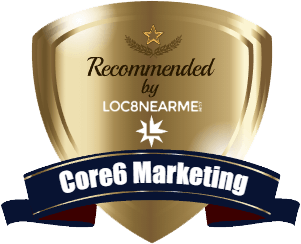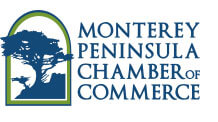The most effective way to ensure that your company stays at the forefront of its industry is to ensure you are tapped into the correct target audience. Defining your target market is no easy task that requires money, time, and a significant amount of effort for companies, both small and large. With the right tools, however, every business can find its niche audience.
Defining Your Target Market
Effective marketing is all about reaching the right people at the right time with the right message. Unfortunately, many businesses make the mistake of only targeting people that are already interested in their business. While it might seem logical to focus on these individuals, it is hardly an effective way to intentionally reach a specific audience and grow your customer base. In order to truly understand how to define and reach your target market, it is important to explore a range of strategies and tools commonly used in the business world.
There are seven key tips that businesses can use to define their target market:
1. Identify Your Customer Base
The first step in defining your target market is to understand what interests your current customers and identify why they continue to support your company. This information is important because it can help you replicate the success you have had with these customers and reach new ones who have similar interests and needs.
By reviewing customer data, including purchase history, demographics, and feedback, you can gain valuable insights into what interests your current customers and why they continue to support your company. For example, you may notice that a certain age group or geographic location is more likely to make purchases from your business, or that certain products or services are more popular than others.
Understanding these patterns and trends can help you better cater to your current customers by offering more of what they want, and can also help you identify opportunities to reach out to others like them.
In addition to understanding what interests your current customers, you must also pay attention to what type of customers generate the most business for your company. This will help you understand which groups of customers are the most valuable to your business and how you can effectively reach and serve them.
For example, if you notice that customers who purchase high-priced items tend to generate more revenue for your company, you may want to focus your marketing efforts on reaching this group. Similarly, if you notice that a particular product or service is particularly popular among your customers, you may want to consider offering more of these items or promoting them more heavily.
By paying attention to what type of customers generate the most business and what products and services they gravitate towards, you can better understand how to reach and serve your target market.
2. Know Your Competition
It is essential for businesses to take the time to thoroughly analyze their competition. Knowing who else is competing for your business and what they are offering can help you understand how to differentiate your company and stand out in the market. By analyzing your competition, you can identify any weaknesses or gaps in their offerings and find ways to fill these gaps with your own products or services.
This can help you attract customers who may have been considering your competition and give you an advantage in the market.
To analyze your competition, it is important to ask yourself questions like:
Who are your main competitors?
What products or services are they offering?
How do their prices compare to yours?
What is their target market and how do they reach them?
By answering these and similar questions, you can get a better understanding of who else is competing for your business and why they may be stealing customers away from you. This information can help you pinpoint where and how you should be reaching out to your audience to effectively compete in the market.
While it is important to keep an eye on your competition, it is also important not to spend too much time focusing on them. Instead, focus on building and promoting your own business and finding ways to differentiate yourself from the competition. By doing this, you can effectively compete in the market and reach your target audience.
3. Review Products and Services
As you look for ways to reach your target audience, it is incredibly important to review your business’ products and services. This is because understanding what you are selling and what the customer expects to receive is crucial for effectively marketing your business and attracting new customers.
By thoroughly reviewing your products and services, you can identify any weaknesses or areas for improvement and make necessary changes to better meet the needs and expectations of your customers.
In addition to understanding what you are selling and what the customer expects to receive, it is also important to understand what occurs in the aftermath of a customer’s purchase from your company. This includes gathering feedback and reviews from customers to see how they feel about your products and services.
Are they happy with the product?
Are they displeased with the customer service?
By understanding how your customers feel about your products and services, you can determine how to better market yourself to potential customers and find the types of people that would most benefit from your business.
Overall, reviewing your business’ products and services is an essential step in defining and reaching your target audience. By understanding what you are selling and how your customers feel about your products and services, you can effectively market your business and attract new customers.
4. Identify the Demographics of Potential Customers
Identifying the demographics of potential customers is an important step in the marketing process because it helps you understand who your target audience is and how to effectively reach them.
Demographics refer to characteristics such as location, gender, education level, income level, age, marital status, and ethnic background, and can give you valuable insights into the types of customers that may be more inclined to do business with your company.
To identify the demographics of potential customers, you can reach out to your community and new customers and gather information about their characteristics. This can be done through surveys, focus groups, or other methods of market research.
By thinking about the varying factors that make up your customers’ demographics, you can better understand who your target audience is and how to effectively reach and serve them.
For example, if you notice that a certain age group or income level tends to be more interested in your products or services, you may want to focus your marketing efforts on reaching this group. Similarly, if you notice that customers from a particular geographic location tend to make more purchases from your business, you may want to consider targeting your marketing efforts in that area.
By understanding the demographics of potential customers, you can effectively identify the types of people that may be more inclined to do business with your company and tailor your marketing efforts accordingly.
5. Target Potential Demographics
To effectively target potential demographics, it is important to use polls, trials, samples, and other methods of market research to gather information about the characteristics and preferences of your target audience. This will help you understand which demographics are more likely to turn to your company and whether or not your company is the best match for your chosen demographic.
There are many different methods of market research that businesses can use to gather information about potential customers, including surveys, focus groups, and online research. By using these tools to ask questions and gather data about your target audience, you can get a better understanding of their preferences, needs, and behaviors.
This information can help you effectively determine whether or not your company is the best match for your chosen demographic and tailor your marketing efforts accordingly.
For example, if you notice that a particular age group or income level tends to show more interest in your products or services, you may want to focus your marketing efforts on reaching this group. Similarly, if you notice that customers from a particular geographic location tend to make more purchases from your business, you may want to consider targeting your marketing efforts in that area.
By using methods of market research to gather information about potential demographics, you can effectively target the types of people that are most likely to turn to your company and tailor your marketing efforts accordingly.
6. Analyze the Psychographics
Analyzing the psychographics of potential customers is an important step in the marketing process because it helps you understand the values, attitudes, personalities, hobbies, interests, behavior, and lifestyle of your target audience. This information can help you determine when and how a potential customer is likely to use your service or product and tailor your marketing efforts accordingly.
For example, if you notice that a particular group of potential customers tends to value environmental sustainability, you may want to emphasize the eco-friendly aspects of your products or services in your marketing efforts.
Similarly, if you notice that a particular group of potential customers tends to be interested in health and wellness, you may want to focus on promoting the health benefits of your products or services.
By understanding the psychographics of your potential customers, you can effectively determine which marketing methods are most likely to be effective on a person-by-person basis and tailor your efforts accordingly.
Overall, analyzing the psychographics of potential customers is an essential step in the marketing process because it helps you understand the values, attitudes, personalities, hobbies, interests, behavior, and lifestyle of your target audience and tailor your marketing efforts accordingly. By taking the time to understand your potential customers on a deeper level, you can effectively reach and engage them and increase the chances of making a sale.
7. Make a Decision
Making a decision about your target audience is the final step in the process of defining your target market. After gathering all of the necessary data and conducting thorough analyses, you will be able to make an informed decision about who you will reach out to with your marketing efforts.
To make the best decision possible, it is important to use all of the information you have gathered about your customers, competition, products and services, and potential demographics to determine which group of people is most likely to be interested in your business. You should also consider factors such as whether your target audience can afford your products or services and whether your marketing efforts will be able to effectively reach them.
Once you have made a decision about your target audience, you can begin to implement marketing strategies and tactics to reach and engage them. This may include creating targeted social media campaigns, developing targeted email marketing campaigns, or creating targeted ads to reach your desired audience.
Overall, making a decision about your target audience is a crucial step in the marketing process because it helps you focus your efforts on the people who are most likely to be interested in your products or services. By investing the time and effort into finding and connecting with the right audience, you can ensure the growth and longevity of your business.
If you need help defining your target audience or implementing marketing strategies to reach them, contact Core6 Marketing. Our team of experts has the knowledge and experience to help you find and connect with the right audience for your business. We offer a range of marketing services, including website development, Local SEO, PPC advertising and consulting. Contact us today to learn how we can help your business succeed and grow.
(Also read this: What’s The Difference Between SEO and Internet Marketing?)
Phil Fisk – CEO/Digital Marketing Consultant – Core6.Marketing







